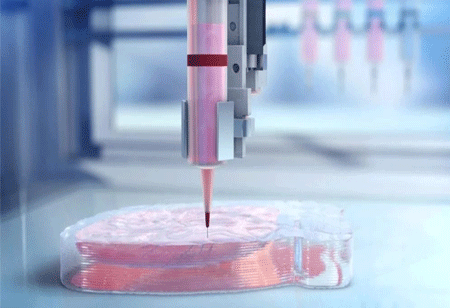THANK YOU FOR SUBSCRIBING
Bioengineers Discover 3D Print Technology for Organ Replacement!
Bioprinting technology has gained traction in terms of organ development as it can enable doctors to design organs based on the patient's cells.

By
Apac CIOOutlook | Wednesday, June 26, 2019
Stay ahead of the industry with exclusive feature stories on the top companies, expert insights and the latest news delivered straight to your inbox. Subscribe today.
Bioprinting technology has gained traction in terms of organ development as it can enable doctors to design organs based on the patient's cells.
FREMONT, CA – A group of bioengineers from Rice University and the University of Washington has uncovered an innovative technique to overcome the obstacle that hindered the 3D printing of replacement organs. The discovery will enable scientists to design and develop sophisticated vascular networks after the natural passageways for blood, air, lymph, and other vital fluids in the body.
The group included collaborators from Duke University, Rowan University, and Nervous System, a design firm in Somerville. The featured 3D model is a hydrogel air sack designed after a lung. The airways deliver oxygen to the blood vessels, mimicking the functions of the natural respiratory organ.
Check out: Top Biotech Companies
The inability to print the sophisticated vascular network which can deliver nutrients to the densely populated tissues had hindered the development of tissue replacements for several years. Also, the complex and independent systems such as the airways, blood vessels, and bile ducts are physically and biochemically entangled. The researchers have successfully created a bioprinting technique that addresses these problems.
The new technique is an essential breakthrough in the tissue engineering field. It has birthed the question of whether the 3D printed tissue can eventually replace the natural tissues. The rising demand for effective organ replacement methods is driving the research and development of bioprinting healthy and functional organs. For instance, over 100,000 people are on the waiting list for organ transplants in the United States alone, and even if they receive organs, they will have to depend on immunity-suppressing drugs to prevent organ rejection by the body.
The prospect of organ development has drawn considerable interest in bioprinting technology, as it could potentially enable the doctors to design organs based on the patient’s cells. The successful implementation of this technology would allow the treatment of millions of patients worldwide. The significance of organ development will likely bring bioengineering to the forefront of the medical sector. Driven by the challenge of creating complex organs, the team of researchers developed an open-source bioprinting technology called the stereolithography apparatus for tissue engineering (SLATE). The technology leverages additive manufacturing to develop each layer using liquid pre-hydrogel, which turns solid when exposed to blue light.





